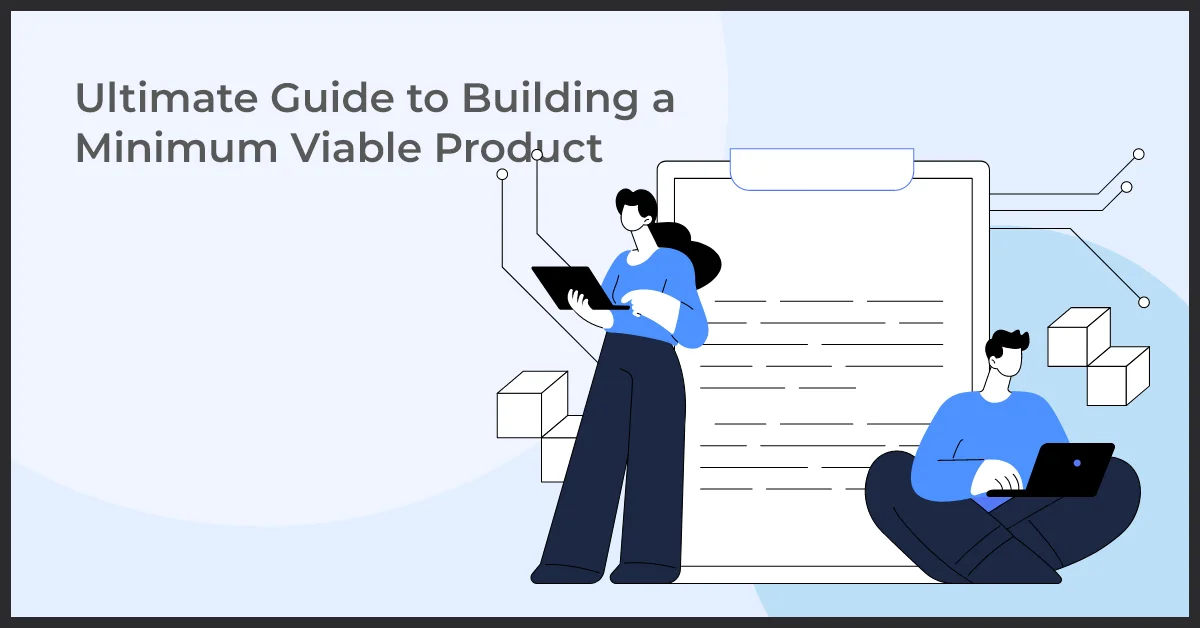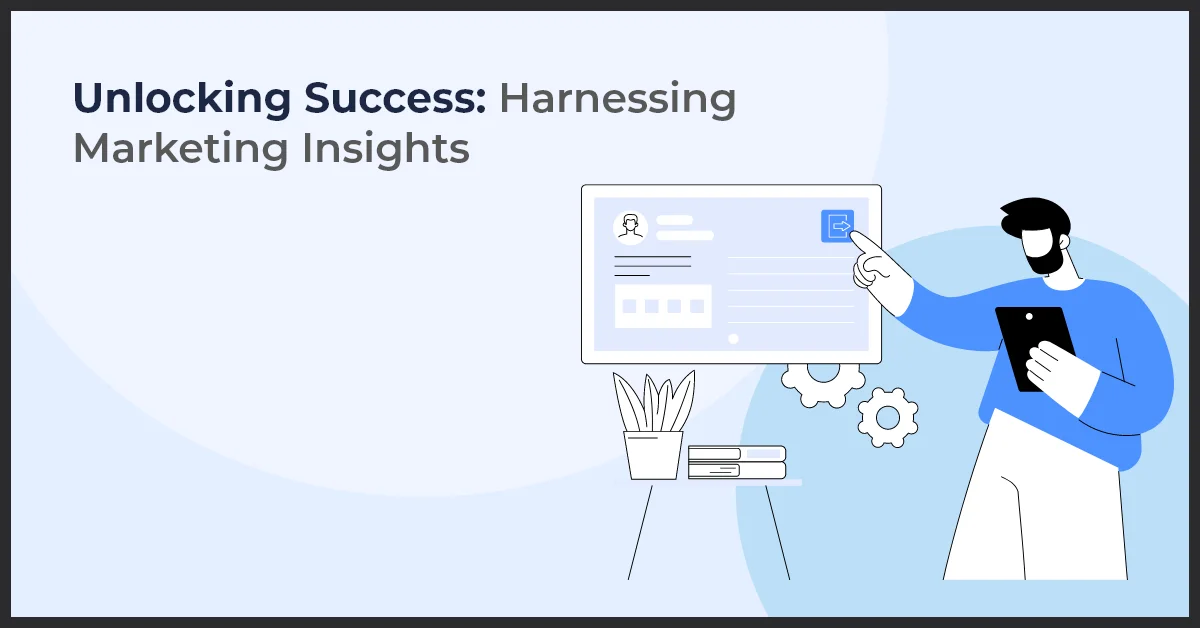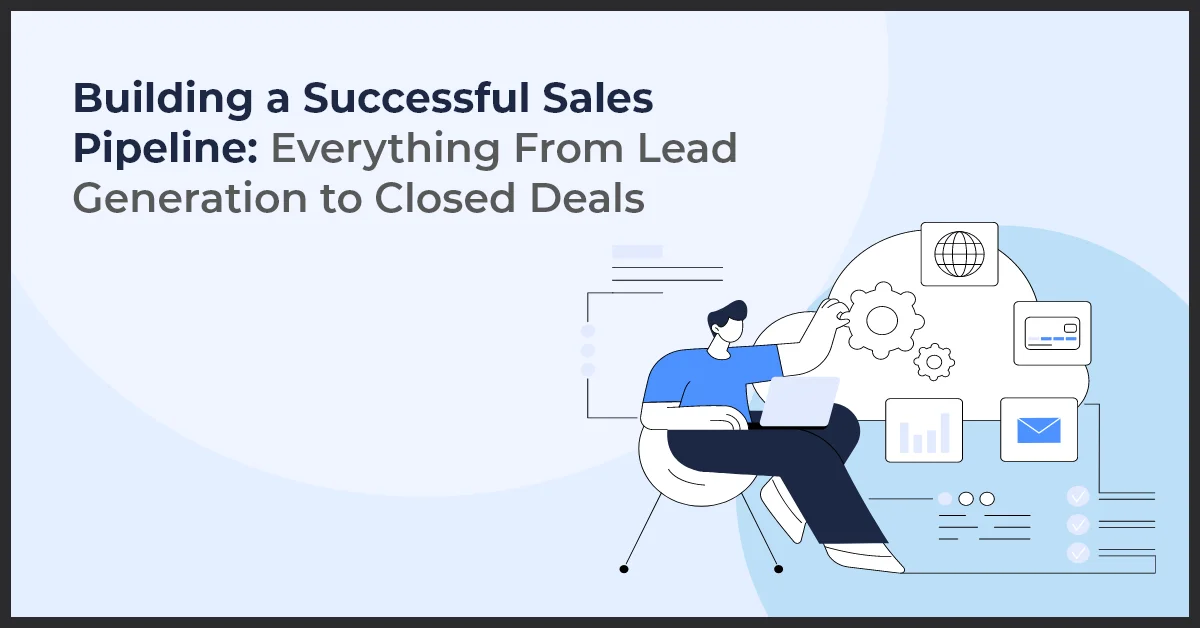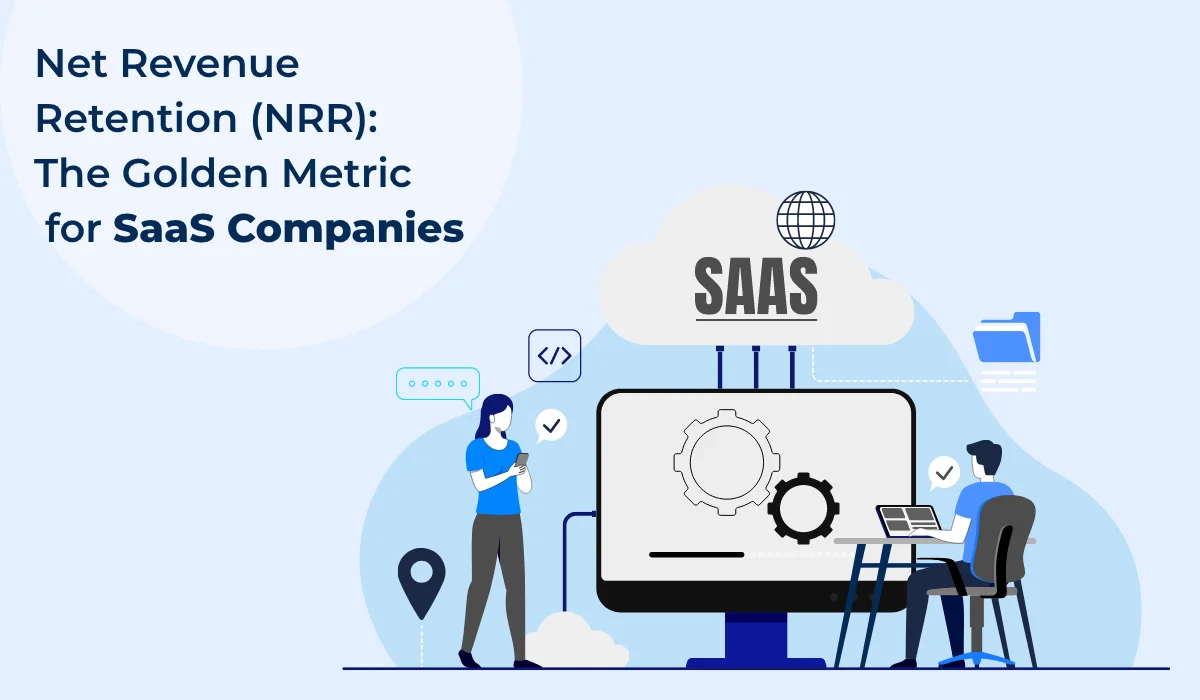Ultimate Guide to Building a Minimum Viable Product

Published on: May 19, 2022
Updated on: March 20, 2024
277 Views
- Strategy
10 min read
Almost all start-up owners will agree that creating a digital product is no piece of cake. It requires a lot of time, resources, and effort. But that is not the main reason why 90% of start-ups fail.
Today, product development is not about the solution but everything linked with it, including real users. The reason why most start-ups never get off the ground is that their product is created on assumptions. The assumption is that their product solves a problem like no other in the market, and that customers will pay to use it, and so on. When data do not back these assumptions, doomsday is inevitable.
That is why when building a software solution, it is critical first to create a minimum viable product (MVP) that keeps the target audience at the center. This approach lets companies test their ideas, learn and optimize, and eventually build a product that users love.
So, what is a minimum viable product (MVP)? What are its benefits? How can small software businesses strive for it? Read along to know the answers to these questions.
What Is MVP?
A minimum viable product (MVP) is the simplest version of a product built with the least effort. Its primary aim is to maximize the product impact by solving users' paint points and collecting their feedback for further development and improvement. In other words, MVP is the most "viable" version of a product that allows teams to garner maximum client feedback with minimum effort.
For developers, the aim is to identify:
- Customers' needs.
- How the product satisfies these requirements.
- Any additional functions that will further improve the user experience.
- Market reaction to such feature releases.
In most cases, an MVP is correlated with the concept of a lean start-up, as companies can validate their ideas and provide a roadmap based on user feedback for a higher success rate.
Why Is MVP Important?
The central idea of an MVP is to quickly create a product that offers immediate value at minimal costs, such as a landing page. A minimum viable product minimizes the risk of miscalculating market demand, desired functionality, and product attractiveness, thus saving time and capital investment.
In a nutshell, the advantages of an MVP include:
- Low investment in terms of capital and resources.
- Reduced risk of loss.
- Access to continuous customer feedback very early in the development cycle.
- Determination of whether the product is well or poorly received.
- Evidence of demand or the lack of it.
Types of MVP
MVPs are categorized into two groups: low-fidelity and high-fidelity.
Low-Fidelity MVPs
Low-fidelity MVPs are relatively easy to create and give simple results to comprehend the needs of potential users. They can be a great asset to getting valuable feedback without using sophisticated and costly methods. Some examples of low-fidelity MVPs are:
1. Landing Page
The most common type of MVP, a landing page, allows potential customers to get an idea about what your product will look like. It has a simple call to action, such as scheduling a demo or signing up for the waitlist.
2. Explainer Video
Explainer videos are great to describe product features and how they can benefit the user. Such videos are becoming popular since they are simple to create yet super effective.
3. Prototypes
Whether it is paper prototypes like sketches, or digital ones such as wireframes, mock-up MVPs provide almost an accurate perception and experience of the product.
4. Marketing Campaigns
Campaigns such as ads or emails offer a great way to run market validation surveys. Such campaigns provide insights into which product features your audience loves based on different attributes such as demography and location.
High-fidelity MVPs
High-fidelity MVPs help determine if your customer is willing to pay for your solution. They are relatively more complex than low-fidelity MVPs but provide more profound results worth all the effort. Some examples of high-fidelity MVPs are:
1. The "Wizard of Oz" MVP
The "Wizard of Oz" MVP builds an illusion of an actual product. On the outside, it looks automated and launch-ready. However, it is executed and processed manually. This type of MVP is best if you want to test ideas that need sophisticated technologies like machine learning or NLP.
2. The "Concierge" MVP
Like the "Wizard of Oz" MVP, the "Concierge" MVP also simulates software while a human executes all the functions manually. In concierge MVP, the user knows that the process is manual and performed in the backend by a human. This MVP is helpful to test the product's popularity and effectiveness before ultimately developing it.
3. Single Featured MVP
If you want to test a single yet essential feature, you can use this MVP type. It keeps the user focused and gives you clear insights into a specific problem or solution.
Examples of Minimum Viable Product
Several companies have used MVPs before creating and launching the actual product. They have reached stratospheric heights with an insanely straightforward MVP. Here are a few examples of such companies:
1. Dropbox
The successful MVP of the world-known cloud storage company Dropbox is no secret. The company's basic explanatory video that illustrated the benefits of the product idea resulted in 75,000 beta users from 5,000 overnight, even when the actual product did not even exist. Today, Dropbox is one of the most popular companies adding more and more functionality to date.
2. Spotify
Days before Spotify became the go-to music streaming service, its founder tested the product in Sweden. During its nascent days, Spotify targeted Swedish artists in the Swedish market. The move was such a hit that the service's development and internationalization happened in no time!
3. Airbnb
Airbnb is another business that followed the MVP route. Its founders tested renting their apartment rooms before launching it. During the early phase, they set up a website, gathered feedback, and learned the suitable form for Airbnb.
Steps to Create a Minimum Viable Product
Creating a minimum viable product involves several steps. There are usually six SIMPLE steps to build an MVP for products like online services, apps, and websites.
Step 1: Start With Market Research
Do thorough market research to understand your target audience and build on an idea that solves their pain points. It is a pivotal point for creating an MVP, and unless you want to end up with a big hole in your pocket—analyze. Look at your competitors, initiate surveys, and collect feedback to create your product's most accurate customer profile.
Step 2: Ideate the Product Value
Once you have identified and researched your ideal customer profile, it is time to qualify your idea and understand if it is worth all the effort. Your project should be able to answer questions such as:
- Why will your customers buy and use your product?
- What value will your product offer?
- What pain points is your product solving?
If you have answers to these questions, it is safe to create an MVP, just like Dropbox founders Arash Ferdowsi and Drew Houston did. They made a short explainer video before starting the product's infrastructure to gauge peoples' interests and identify ways to offer value to them.
Step 3: Map User Flow and Design Process
Put yourself in your customers’ shoes and try to identify ways to make a seamless user experience. What do you expect to see from the product/service as a user? How will it work? When designing a process, always keep customer satisfaction at the center and pivot all the processes around it.
Step 4: Prioritize Necessary Features
Once you have decided on the design process, list all the necessary features required to launch an MVP. While there might be a temptation to list all the desired features, not all of them can be included or completed. Hence, identify and prioritize only the essential ones for the initial project launch, just like Spotify did.
Step 5: Launch MVP
You can start building your MVP while keeping the quality no lower than the actual product. Remember, MVP is not a proof of concept. It is made to ease users' pain points while gathering feedback. Your MVP should attract the customer for its ease of use, intuitiveness, and suitability while solving customers' problems.
Step 6: Evaluate and Optimize
To further improve the MVP and reach its logical goal of being an actual product, continuously gather and analyze data to optimize the development process. For instance, a software MVP will require businesses to gather feedback, determine new feature demands, test, and fix errors and bugs.
Measuring Success After Building an MVP
The most obvious and common way to measure the success of your MVP is by knowing how many of your target audience tried your product. This will tell you if there is a need to invest beyond the MVP. If the number is not enough, you need to go back to the drawing board and rework and refine your idea further.
While this method is indicative of your MVP's popularity, it does not always guarantee return unless there is a way to prove that the product works. You need to gather data-backed evidence to confirm that the MVP solves customers' pain points. For this, you need to measure two things:
- How attractive is your product for early adopters?
- How practical and valuable is the MVP in solving customers’ problems for customers.
Here are some ways you can get answers to these questions:
Acquisition Rate
Acquisition rate is one of the critical metrics to understand the performance of your MVP. It can be defined as the number of people using your product or the number of potential users who come across your MVP. For instance, if your MVP is a landing page, you can measure the acquisition rate based on the number of visitors to the page and the bounce rate.
Acquisition costs
Customer acquisition cost is another fair indicator of your MVP's success. It refers to the total money spent on acquiring one customer over the lifetime value of the business. For example, if you invest $10k to acquire 10 customers, but only one becomes profitable, your customer acquisition value is $1000.
Conversion Rate
You can also identify the success of your MVP by looking at the conversion rate, which is defined as the total percentage of the user that converts into paying customers. Measuring the conversion rate is helpful if you offer a free trial plan. You can determine the conversion rate based on the number of people who convert into paying users after the free trial is over.
Referral Rate
Another metric we recommend tracking is the referral rate, which implies the number of new, unique users referred by your existing customers. Referrals are a sure-shot way to grow your business. Word of mouth also helps track your best-performing markets.
Retention and Churn Rates
During its MVP phase, measure the retention and churn rates to understand the value created by your product. If you have a high churn rate, it could be because of too many bugs, the product is difficult to use, or poor functionalities. Reducing churn and increasing referrals need a sound strategy that addresses the overall quality of your product.
Summing Up
Developing a successful MVP requires a balance between efficiency and usability. And the best part, you do not need a large budget for it!
Once launched, you need to constantly collect feedback to understand what the product lacks, ensure market validation and shape the final version of the product accordingly. While you are at it, do not forget to test, learn, measure, and repeat until the final product is established.
If you are looking to develop an MVP, Growth Natives can help. Book a free consultation today to see how we can turn your business idea into a reality with our beautiful designs, development, and continuous testing.



